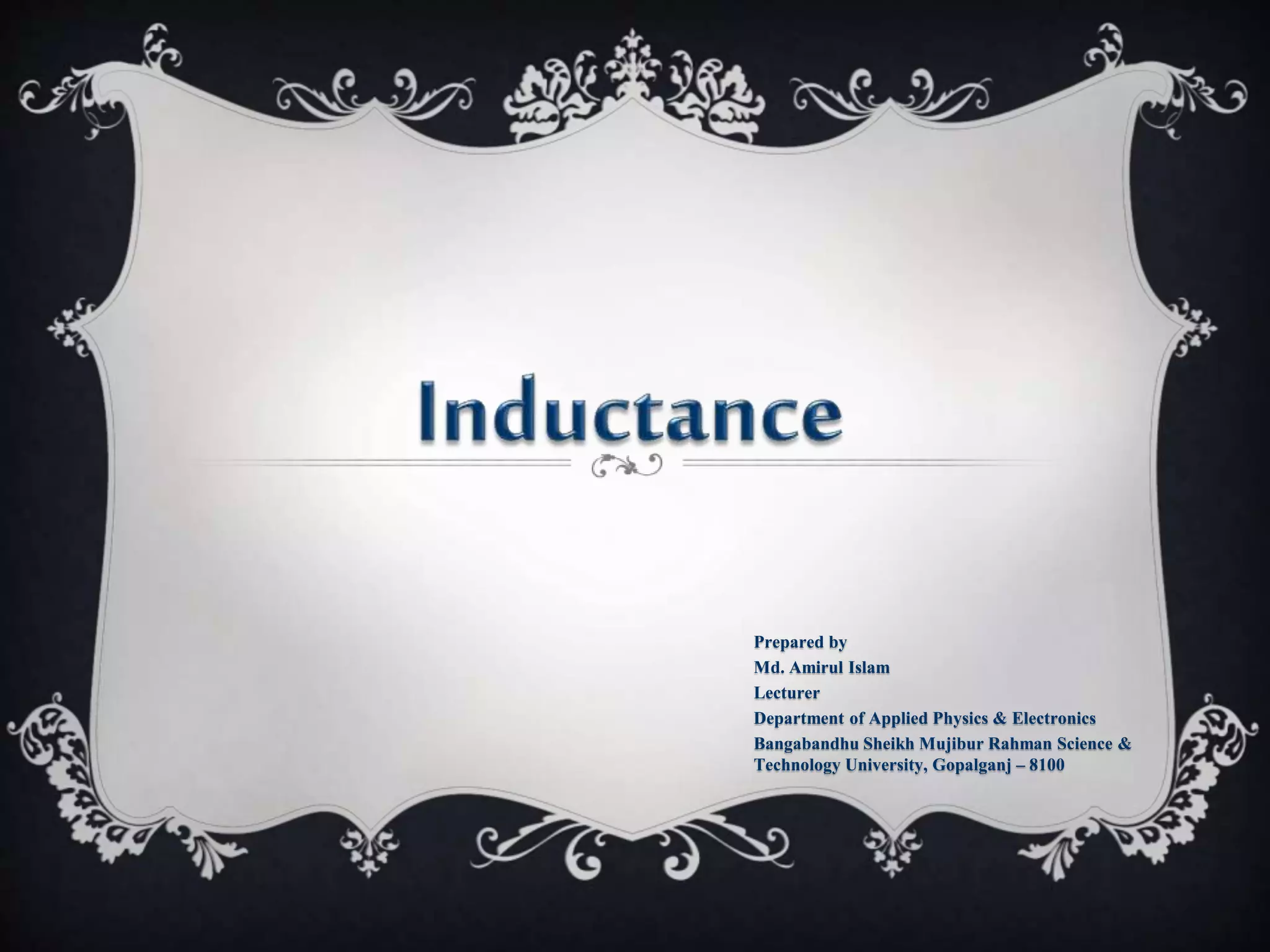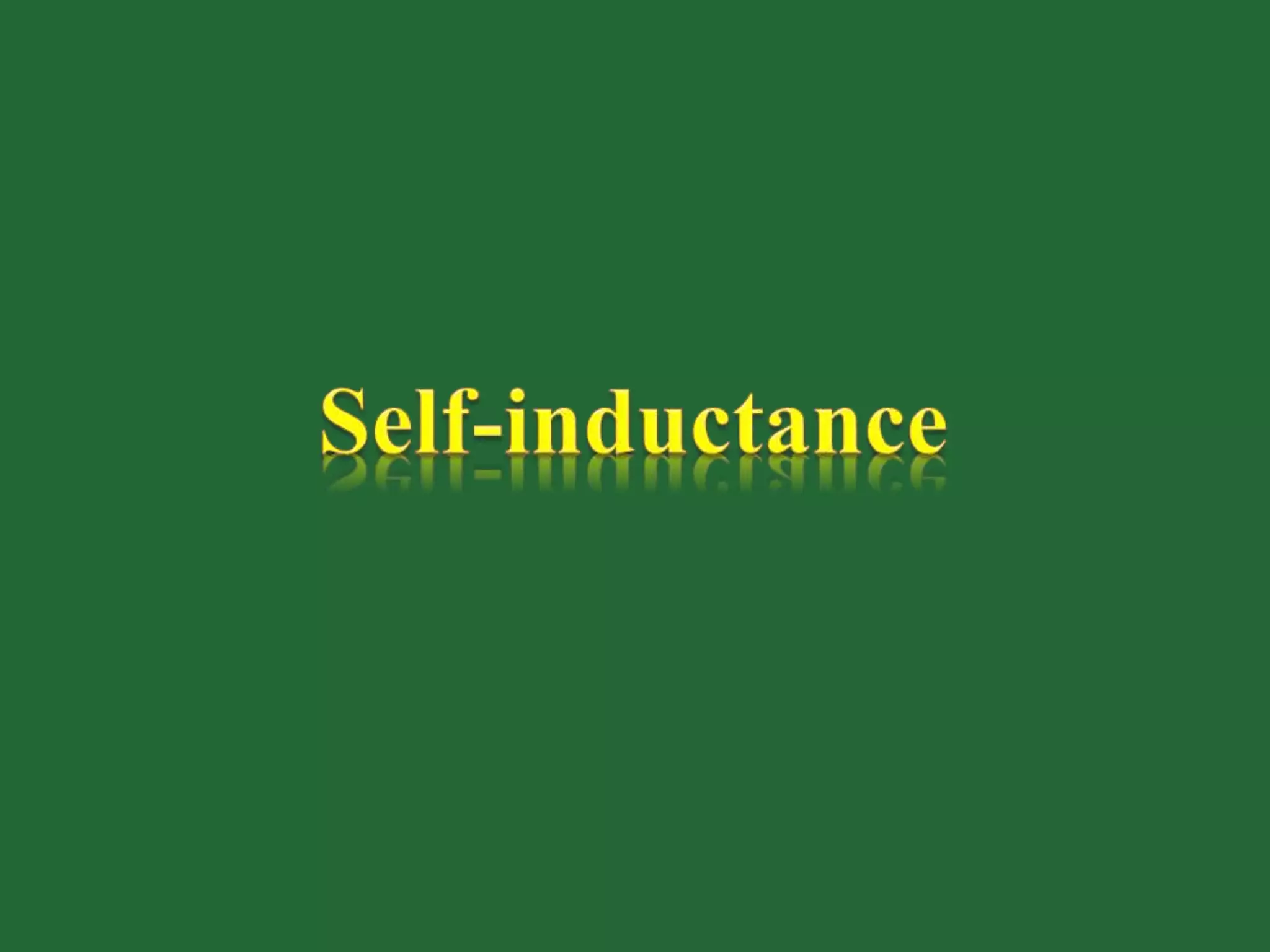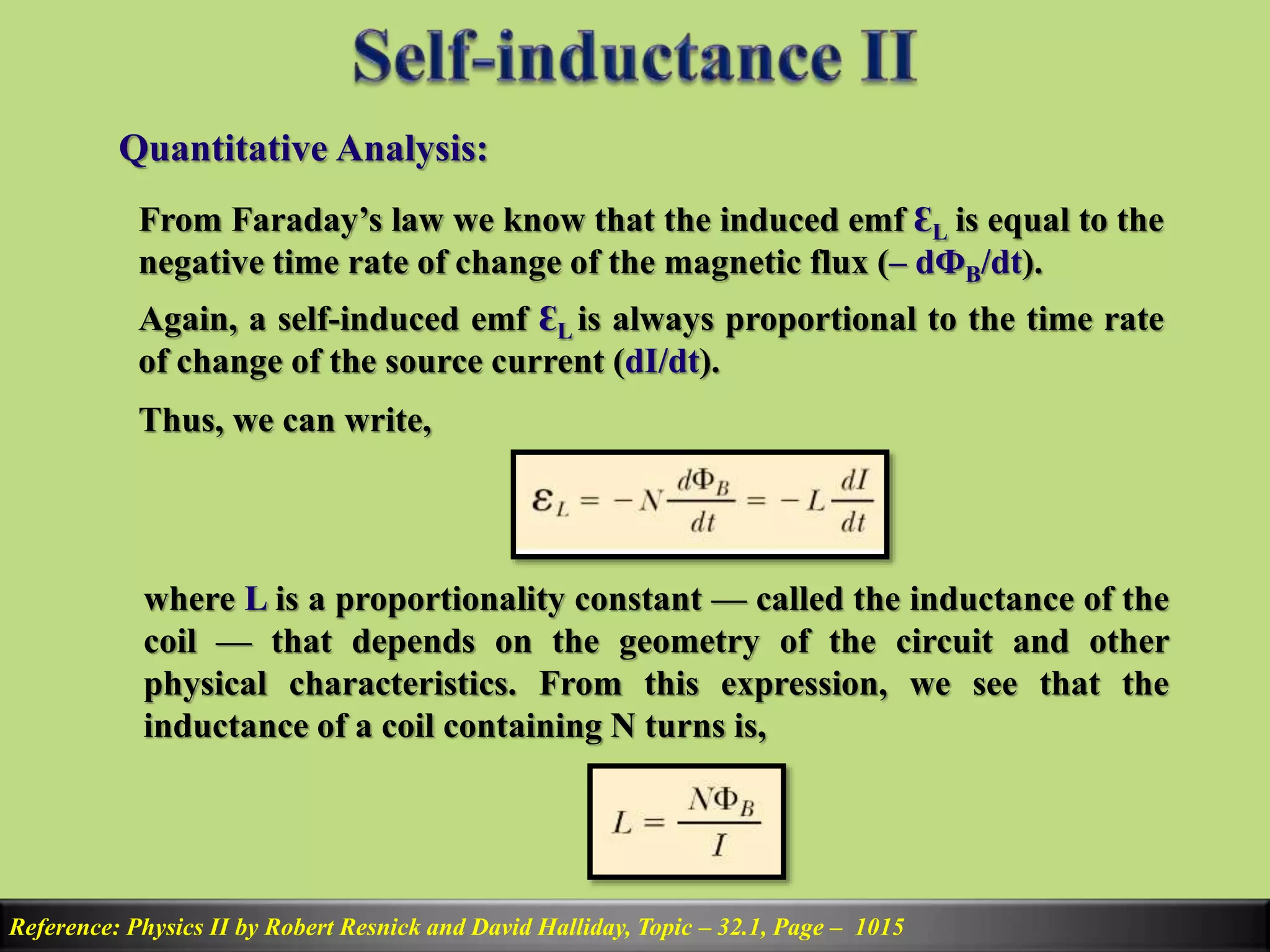1) The document discusses self-induction and back emf in circuits containing coils or inductors. When the current through a coil changes, it produces a back emf opposing the change due to Lenz's law.
2) It also describes how transformers work using mutual induction between two coils. The primary coil is connected to a changing current that induces a current in the secondary coil.
3) Transformers can be used to change voltages by adjusting the turn ratios of the coils. They allow efficient long-distance power transmission by stepping voltages up for transmission and down for usage.





















